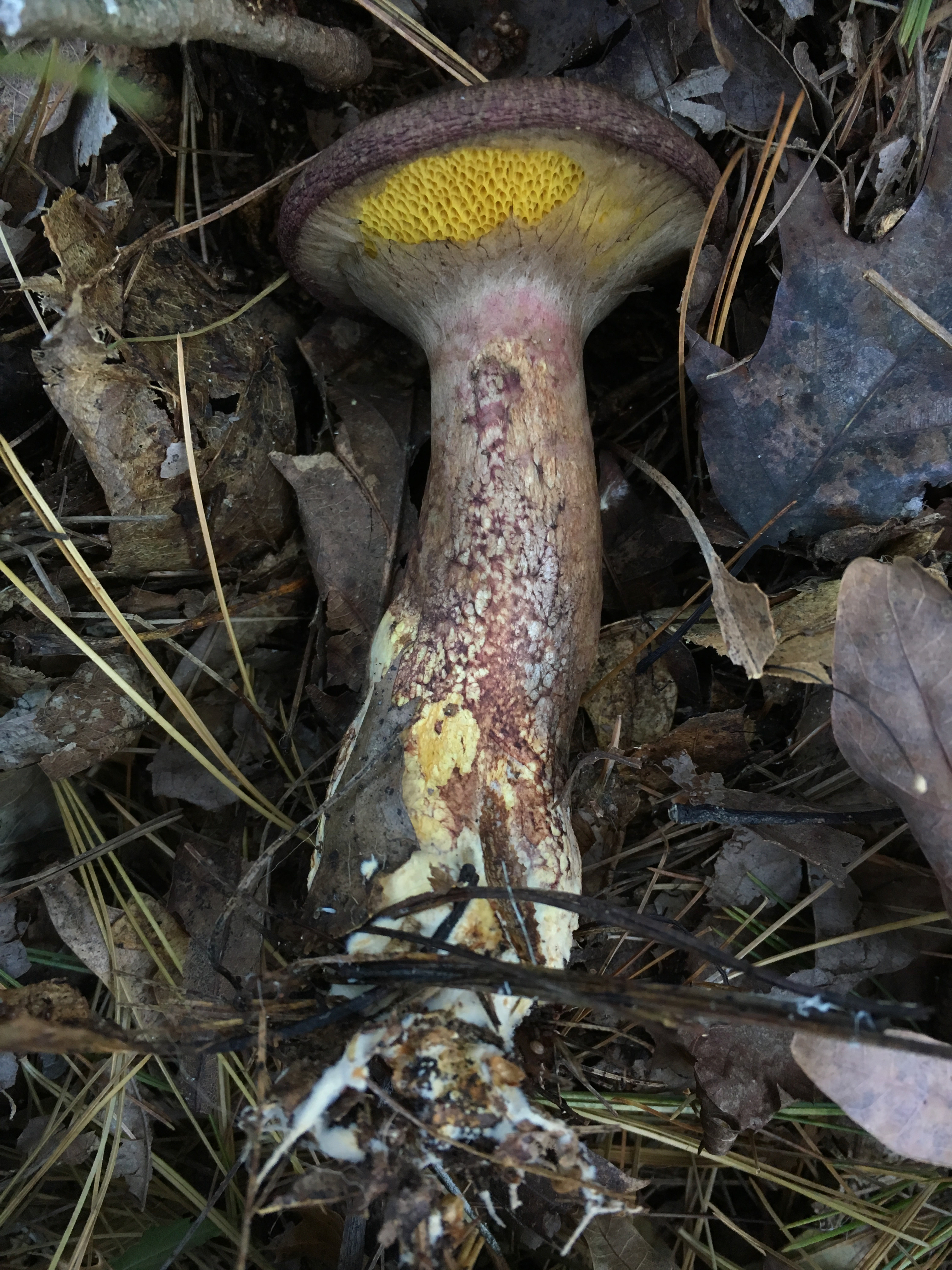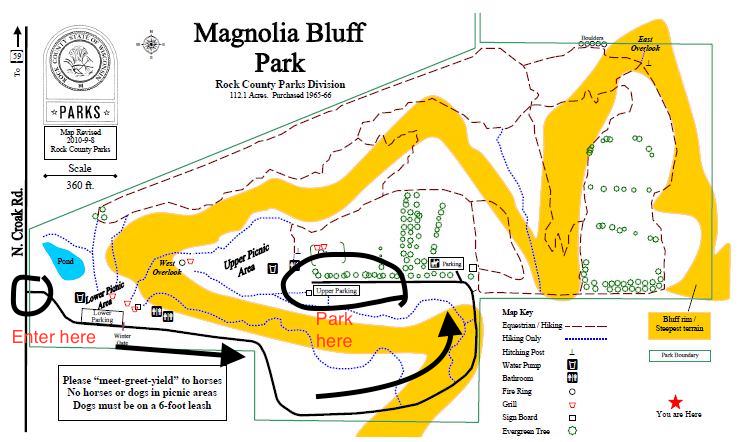
Join us for our VERY LAST FORAY OF 2018! The days and nights are getting quite cool and with the increasing frequency of frost, macrofungi are just about done for the season. Some mushrooms can still be found, though, including the late fall oyster (Sarcomyxa serotina), honey mushrooms (Armillaria spp.), the elm oyster (Hypsizygus ulmarius), and more, like this strangely colored Suillus spraguei that I found on Thursday when I scouted the location. Of course, crusts, lichens, and cup fungi don’t mind the cool weather and we will be excited to look at those, too.
Given the construction on highway 151, the drive from the Capitol is 56 minutes. Please follow the outlined path in Google Maps. Please look at this map of the site. We will be parking along Ridgvue Road, on the East side, between the two house icons and then walking East into the pine forest. Find a carpool buddy here. Please note, the terrain gets pretty steep! This site is spectacular for its topography, which unfortunately also makes it difficult to navigate.

